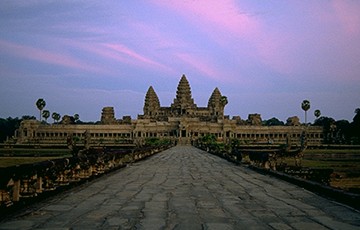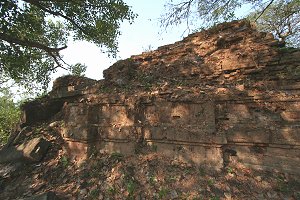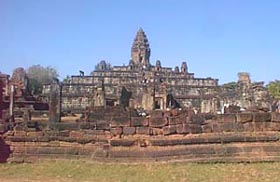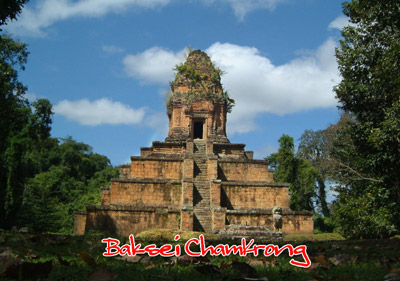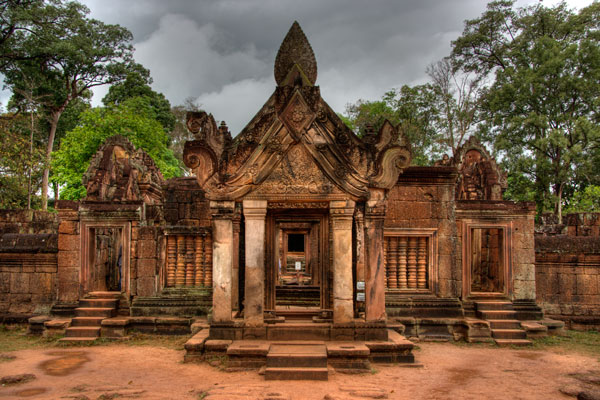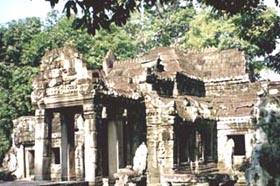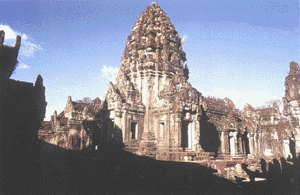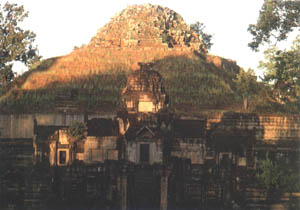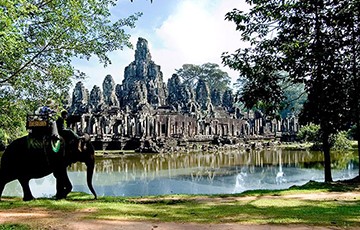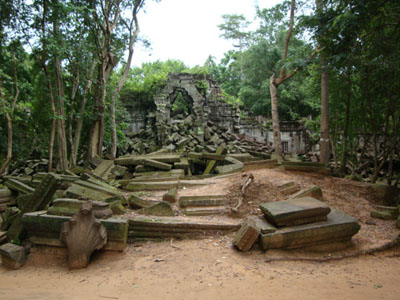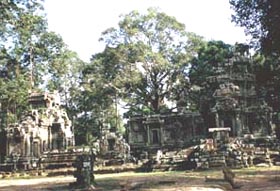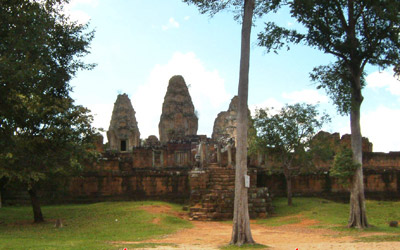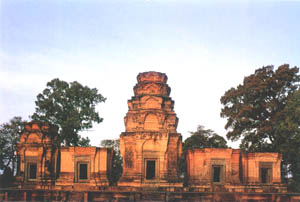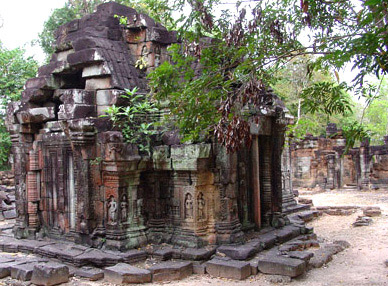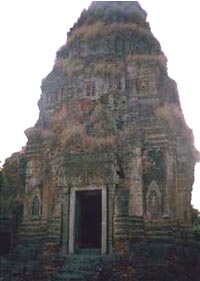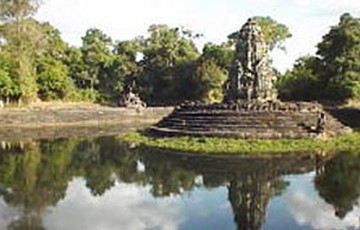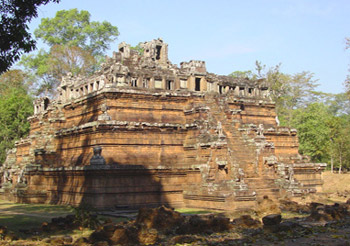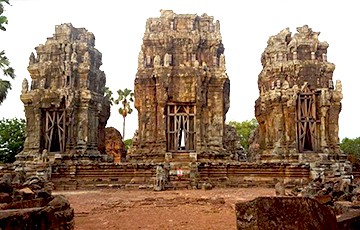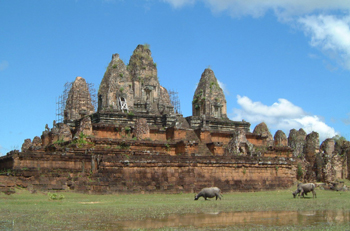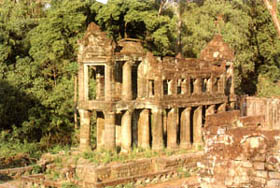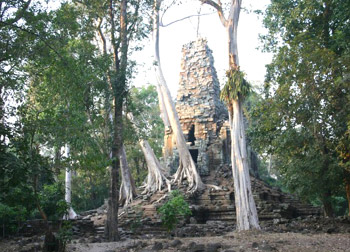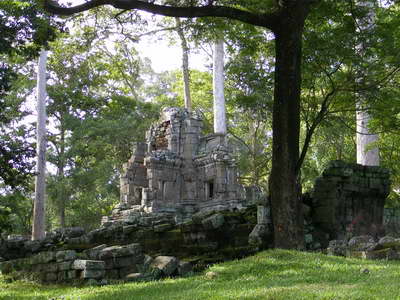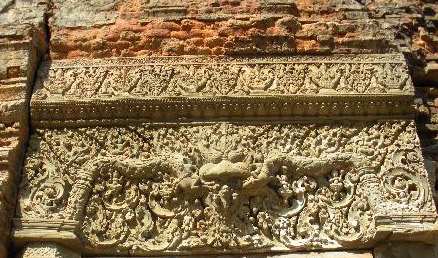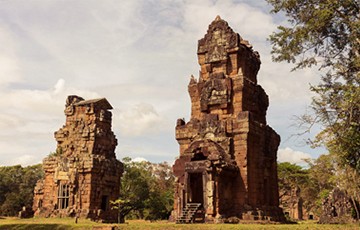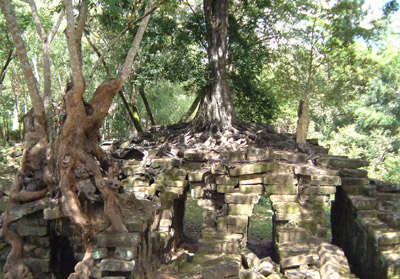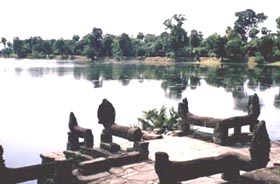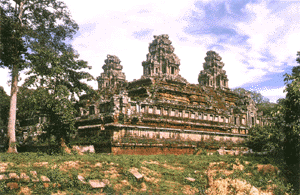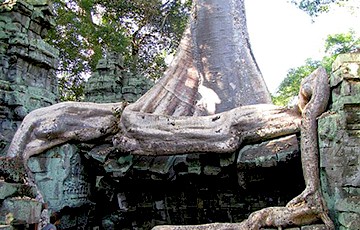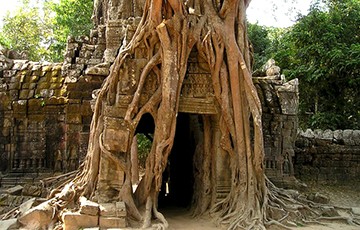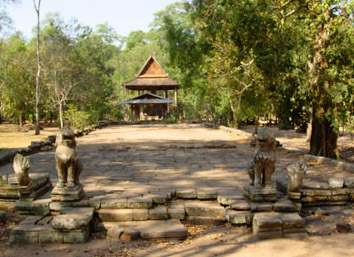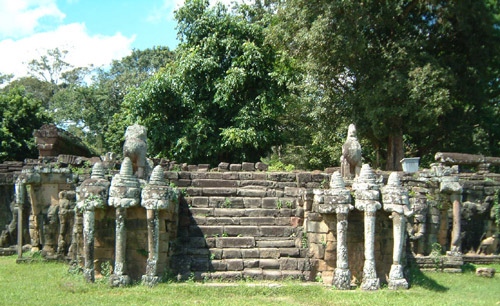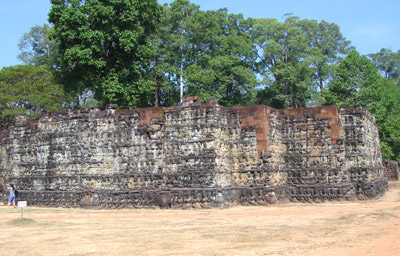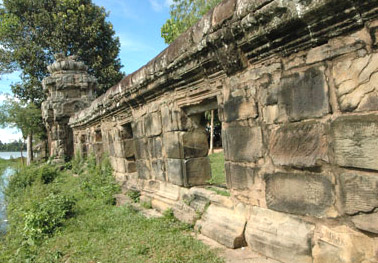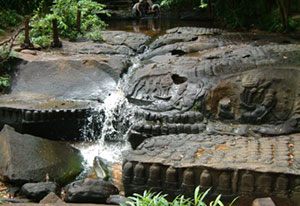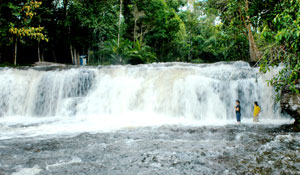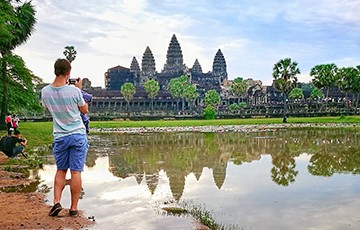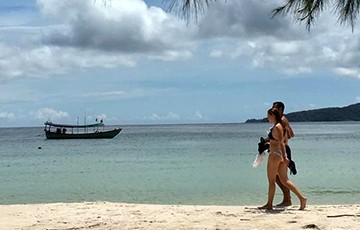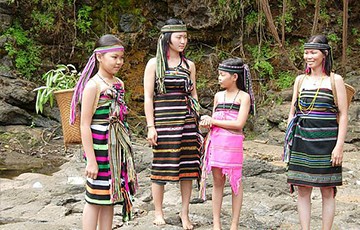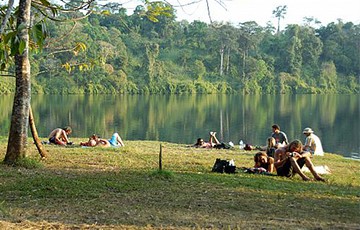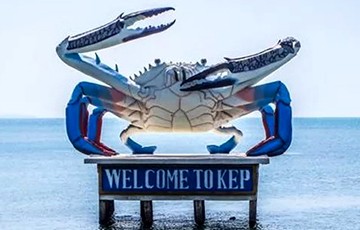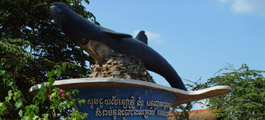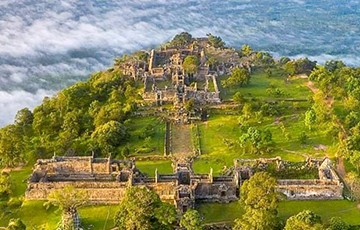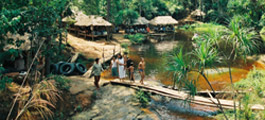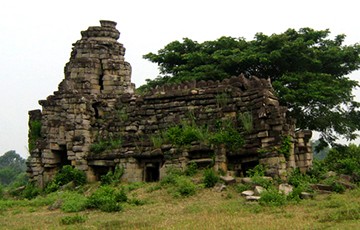Prasat Preah Ko - The Sacred Ox
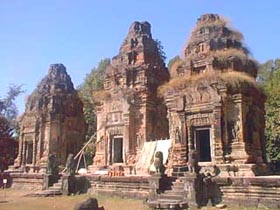 Prasat Prah Ko is located at Roluos between Bakong and Lolei; it is mid-way between Bakong and the road. A enter and leave the temple from the east. It was built in late ninth century (879) by the King Indravarman I, dedicated to Siva (Hindu) funerary temple built for the king's parents, maternal grandparents, and a previous king, Jayavarman II and his wife, replica to Prah Ko style of art.
Prasat Prah Ko is located at Roluos between Bakong and Lolei; it is mid-way between Bakong and the road. A enter and leave the temple from the east. It was built in late ninth century (879) by the King Indravarman I, dedicated to Siva (Hindu) funerary temple built for the king's parents, maternal grandparents, and a previous king, Jayavarman II and his wife, replica to Prah Ko style of art.
LAYOUT
The complex of Prah Ko is square and surrounded by four enclosing walls with entry towers successively smaller in size. The first two walls are in a ruined state with only vestiges remaining. The first, or outer, enclosure is 450 by 800 meters (1,476 by 2,625 feet) square with entry towers on the east and west sides.
The central area is rectangular and consists of six brick towers arranged in two rows on a low platform. The towers to the front of the platform are than those at the back; the middle one in the front is the largest and set slightly back from the other two. the three in the front row are for paternal ancestors, with male guardians flanking the doorways; the three in the back row are for maternal ancestors and have female divinities flanking the doorways.
The back row of towers is curiously unevenly spaced with the right-hand one closer to the center tower than left-hand one. It has been suggested that the placement of the two towers close together in the back may signify that those two ancestors loved each other during their earthly life.
A small terrace in the shape of a cross (largely destroyed) precedes the literate entry tower to the east. Additional beings on the east and west sides lead to a literate causeway. Sandstone pillars and windows with thick balusters carved with rings, which give the appearance of being turned like wood, complete the remains of the temple complex. A step at the entrance in the shape of a moonstone is note-worthy for its graceful form.
In the courtyard there are the bases of two galleries, which run parallel to the east wall. Close to and parallel to the north and south walls of the enclosure ate two long halls. On each side of the causeway, and closer to it, are two galleries with a porch opening to the east (mostly ruined). Between the long hall and the gallery on the left is a square brick building that may have been a crematorium, with a tiered upper portion and a porch opening to the west. It is distinguished by rows of holes (perhaps for ventilation) and a row of figures of ascetics in niches above the holes on the upper portion of the building.
Continuing along the causeway one comes to the brick wall of an enclosure, which has two entry towers, one in the east and another directly opposite it on the west. They are simple square buildings with columns and fine lintels depicting Visnu on a Garuda. An inscription was found in the entry tower on the east. Past the entry tower at the east in the courtyard there are the remains of three crouching sacred bull aligned in a row
CENTRAL AREA (BASE AND TOWER)
The base of the Central Sanctuaries has three stairways along the eastern side. The landings are decorated with make and female figures. Sandstone lions on the stairways guard the temple. The only other access to the central level is a single stair way on the west side.
The central towers are square on the lower portion with a porch in each of the cardinal directions. Each of the six towers of the Central Sanctuary group was covered with stucco. Traces of the original material can be on the tower on the right of the back row.
The thickness of the stucco and the sandstone motifs of the false doors are features on this tower. The columns, which are octagonal, are 'incontestably the most beautiful of Khmer art ', according to French conservators. The frame of the door is cur in four parts and the corners where the pieces meet are mitered, like wood, by cutting the ends of two pieces at identical angles and fixing the cut faces together.
Sandstone lintels above the doors of the tower in the front row on the right are decorated with small horsemen and figures mounted on serpents. The lintel on the false door of the middle tower of the back row have a Garuda in the center, surmounted by a row of small heads.
Corner niches of the central tower in the front row have male guardians in niches carved in sandstone and encased in brick.
The decoration on the three towers in the back row is if inferior quality to that on those in the front row. The corner niches contain female deities. A curious feature of the center tower in the back row is that the false door is brick coasted with stucco whereas the other false doors are of sandstone. Each tower originally contained an image of a Hindu god with whom the deceased was united.
Tip: Looking east from the platform of the Central Sanctuaries one can see the laterite roadway and remains if the entry towers of the four enclosing walls.
Leaving the Central Sanctuary from the west one passes through a simple square entry tower with a stairway (mostly demolished). The courtyard on this side is narrow and contains two rectangular galleries parallel to the west wall.




